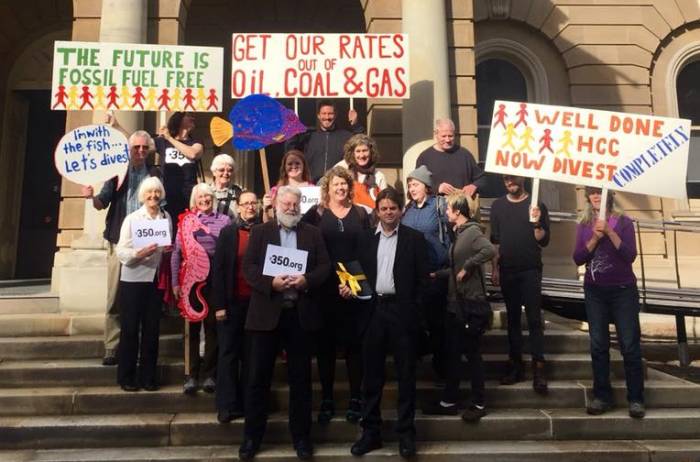
Image via Anna Reynolds/Facebook
The fossil fuel divestment juggernaut rumbles on, with Hobart City Council announcing it was getting on board in a big way.
According to Hobart City Council Alderman Anna Reynolds, a new Council policy was passed last night that commits to investing 100% of City funds in banks that don’t back fossil fuels.
“Hobart Council’s new investment policy is one of the most progressive for local government in Australia,” said Ms. Reynolds. “Our commitment sends a strong message to the “big four” banks that continue to invest in the fossil fuel industry.”
ABC reports Monday night’s vote saw nine to three in favour of changing the council’s investment and borrowing policy. The transition is expected to take several months.
350.org Australia, a not-for-profit climate group, congratulated Hobart City Council
“Last week in Australia the NAB became the first Australian bank to ban any further financing of coal projects,” said Glen Klatovsky, Deputy CEO of 350.org Australia. “AGL declared its commitment to never invest in coal again. Origin promised to halve their emissions by 2032. And today Hobart joined this incredible national and global movement. The momentum against fossil fuels is growing fast.”
Hobart City Council’s Climate And Energy page states:
“We recognise that climate change is a significant global issue that will be experienced at a local level, and see it as our role to assist the community to begin to adapt to climate hazards and risks and reduce their carbon footprints.”
Among Council’s efforts in decreasing its own carbon footprint and reining in electricity costs is the installation of solar power systems at various locations around the city. These include:
- Bushlands Operations Depot (5.3kW)
- Clearys Gates (10.25kW)
- Doone Kennedy Hobart Aquatic Centre (100kW and 300kW system)
- City Hall (5.3kW)
- Mathers House (3.2kW)
- Mornington Regional Nursery (3.2kW)
- North Hobart Oval (4.2kW)
- McRobies Gully Waste Management Centre (10.25kW)
The recently released Annual Plan report states collection of background information has commenced on an investigation into the feasibility of installing an additional 140 kilowatts of solar power capacity on the City’s buildings.
While the amount of sunlight is reduced in Tasmania in comparison to mainland locations, installing solar power in Hobart (which has a yearly average of 3.5 sun-hours a day) and other locations in Tasmania is certainly a worthwhile carbon and energy cost reduction exercise.

 RSS - Posts
RSS - Posts



Speak Your Mind